The Impact of Climate Change on Global Biodiversity
This article explores how climate change affects biodiversity worldwide, examining the consequences for ecosystems, species, and human society, as well as potential solutions to mitigate these impacts.
Biodiversity encompasses the variety of life on Earth, including species diversity, ecosystem diversity, and genetic diversity. It is the intricate web that sustains our planet, providing essential services such as clean air, water, and food. Without biodiversity, ecosystems would falter, leading to a cascade of negative effects on human health and well-being. Imagine a world where the vibrant colors of a coral reef fade to dull gray, or where the sounds of a bustling rainforest are replaced by silence. That's the reality we face if we don't take action to protect our planet's rich tapestry of life.
Climate change is primarily driven by human activities, and understanding its causes is crucial for addressing its impacts. The main culprits include greenhouse gas emissions and deforestation, both of which contribute to the alteration of natural habitats and ecosystems. The relationship between these factors and biodiversity is complex, but one thing is clear: as our planet warms, the delicate balance of life is at risk.
Greenhouse gases trap heat in the atmosphere, leading to global warming. The major sources of these emissions include fossil fuel combustion, industrial processes, and agriculture. As the concentration of these gases increases, so do the temperatures on Earth. This rise in temperature directly affects biodiversity by altering habitats, disrupting migration patterns, and pushing species towards extinction. For instance, species that thrive in specific temperature ranges may find themselves unable to adapt quickly enough to the changing climate, leading to a decline in their populations.
Deforestation is another significant contributor to climate change, resulting in habitat loss for countless species. When forests are cleared for agriculture, urban development, or logging, the intricate ecosystems that once thrived are destroyed. This loss not only affects the species that call these forests home but also contributes to increased carbon emissions, creating a vicious cycle. The implications of habitat destruction are profound, as it leads to reduced genetic diversity and the extinction of species that play vital roles in their ecosystems.
Ocean acidification is a lesser-known but equally alarming consequence of increased CO2 levels in the atmosphere. As the oceans absorb more carbon dioxide, their acidity increases, threatening marine life. Coral reefs, often referred to as the rainforests of the sea, are particularly vulnerable. They rely on specific pH levels to thrive, and as the oceans become more acidic, coral bleaching occurs, leading to the loss of these vital ecosystems. This not only impacts marine biodiversity but also the human communities that depend on healthy oceans for their livelihoods.
Climate change affects species survival, distribution, and behavior in profound ways. Rising temperatures and changing weather patterns influence how species adapt, migrate, or, unfortunately, face extinction. For example, polar bears are struggling as their sea ice habitat diminishes, while migratory birds find their traditional routes disrupted. The ability of species to adapt to these rapid changes is being tested like never before, and many are failing the challenge.
Some ecosystems are particularly vulnerable to climate change, and their preservation is crucial for maintaining global biodiversity. Forests, wetlands, and coral reefs are at the forefront of this battle. Each of these ecosystems faces specific challenges that threaten their survival and, in turn, the myriad of species that depend on them.
Coral reefs are among the most affected ecosystems due to climate change. The threats they face include bleaching and habitat loss, which have devastating impacts on marine biodiversity. Coral reefs are home to thousands of species, and their decline can lead to the collapse of entire marine ecosystems. Protecting these vibrant underwater gardens is vital not only for the species that inhabit them but also for the millions of people who rely on them for food and tourism.
Tropical rainforests play a crucial role in global biodiversity, acting as a sanctuary for countless species. However, climate change is impacting these vital ecosystems in numerous ways, from altered rainfall patterns to increased temperatures. As these forests face stress, the species that rely on them for survival are also at risk. The loss of tropical rainforests would not only diminish biodiversity but also exacerbate climate change, as these forests are significant carbon sinks that help regulate our planet's climate.
In response to climate change, various conservation strategies are being implemented globally. These measures aim to protect biodiversity and promote ecosystem resilience against climate-related threats. Strategies include establishing protected areas, restoring degraded ecosystems, and implementing sustainable land-use practices. By prioritizing conservation efforts, we can help safeguard the future of our planet's biodiversity and ensure that future generations inherit a thriving, diverse world.
- What is biodiversity?
Biodiversity refers to the variety of life on Earth, including different species, ecosystems, and genetic variations within species. - How does climate change affect biodiversity?
Climate change alters habitats, disrupts migration patterns, and increases extinction rates, threatening the survival of many species. - What are the main causes of climate change?
The primary causes include greenhouse gas emissions from fossil fuels, deforestation, and industrial processes. - Why are coral reefs important?
Coral reefs support a vast array of marine life and provide critical resources for coastal communities. - What can be done to protect biodiversity?
Effective conservation strategies include creating protected areas, restoring ecosystems, and promoting sustainable practices.
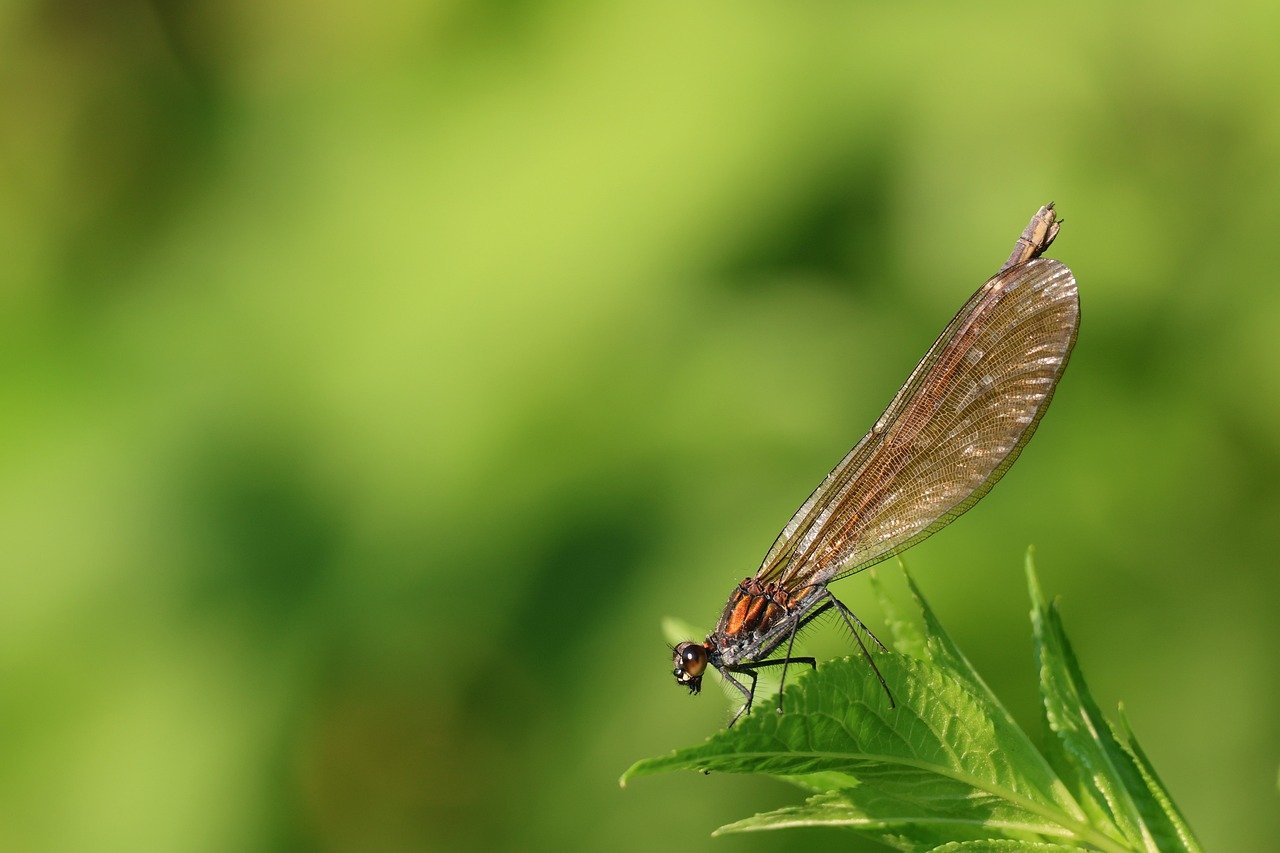
Understanding Biodiversity
Biodiversity is a term that encapsulates the remarkable variety of life on our planet. It includes everything from the tiniest microorganisms to the largest mammals, and it can be divided into three main categories: species diversity, ecosystem diversity, and genetic diversity. Each of these components plays a crucial role in maintaining the delicate balance of our ecosystems. Imagine biodiversity as a grand tapestry, where each thread represents a different species or ecosystem, woven together to create a vibrant and resilient fabric of life. When one thread is pulled or damaged, the entire tapestry can unravel, leading to unforeseen consequences.
The importance of biodiversity cannot be overstated. It performs essential functions that sustain life, including pollination of plants, purification of air and water, and regulation of climate. These processes are vital not only for the survival of countless species but also for human well-being. For instance, healthy ecosystems provide us with food, clean water, and raw materials for shelter and medicine. Furthermore, they offer recreational opportunities and cultural significance, enriching our lives in ways that are often taken for granted.
However, biodiversity is under constant threat from various human activities, such as habitat destruction, pollution, and climate change. The loss of species and ecosystems can lead to a domino effect, disrupting ecological balance and diminishing the resilience of our environment. For example, when a keystone species—an organism that has a disproportionately large effect on its environment—is removed, it can trigger a cascade of changes that affect numerous other species. This interconnectedness highlights the urgent need for conservation efforts to protect biodiversity, ensuring that our planet remains a thriving home for all forms of life.
To truly grasp the significance of biodiversity, we must also recognize the intricate relationships that exist within ecosystems. Species depend on one another for survival; for instance, predators control the population of prey species, while plants provide oxygen and food for herbivores. This web of interactions is what keeps ecosystems functioning smoothly. Without biodiversity, these relationships can break down, leading to ecosystem collapse. Therefore, preserving biodiversity is not just about saving individual species; it’s about safeguarding the entire web of life that supports us all.
In summary, understanding biodiversity is crucial for appreciating the complex interdependencies that sustain life on Earth. It serves as the foundation for ecosystem health and resilience, which ultimately benefits humanity. Protecting biodiversity is not merely an environmental concern; it is a fundamental aspect of ensuring a sustainable future for all living beings. As we continue to face the challenges posed by climate change and other anthropogenic pressures, we must prioritize strategies that promote biodiversity conservation. The fate of our planet and future generations depends on it.
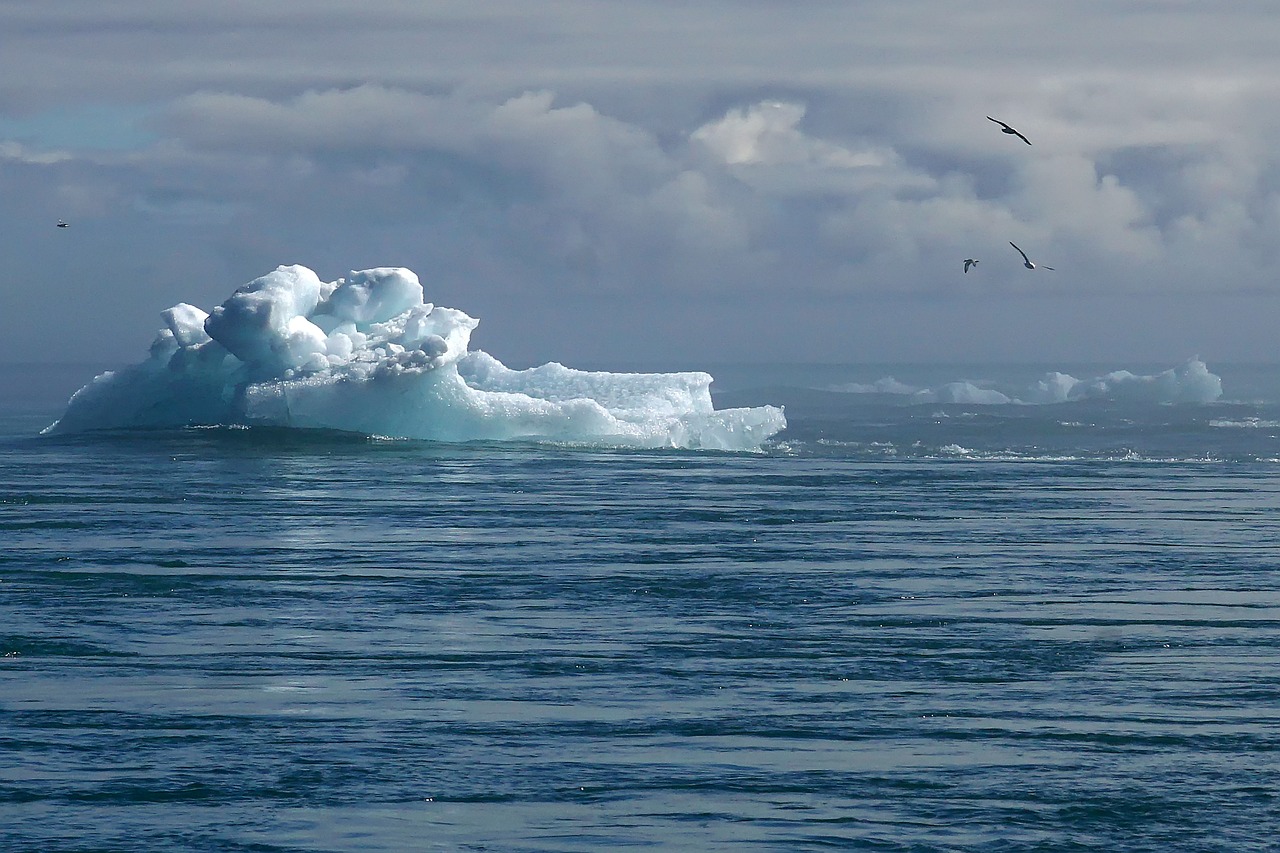
Climate Change and Its Causes
Climate change is often described as the defining issue of our time, and for good reason. It refers to long-term shifts in temperatures and weather patterns, primarily driven by human activities. The primary culprits behind these changes are greenhouse gas emissions and deforestation, both of which have far-reaching consequences for our planet's biodiversity. But how do these factors contribute to climate change, and what does that mean for the natural world?
To understand the impact of climate change, we first need to look at greenhouse gas emissions. These gases, including carbon dioxide (CO2), methane (CH4), and nitrous oxide (N2O), are released into the atmosphere through various activities. For instance, burning fossil fuels for energy, industrial processes, and even agricultural practices release significant amounts of CO2. According to the Environmental Protection Agency, the energy sector alone is responsible for over 70% of total greenhouse gas emissions in the U.S. This accumulation of greenhouse gases traps heat in the atmosphere, leading to global warming.
The impact of greenhouse gases on biodiversity is profound. As temperatures rise, many species struggle to adapt. For example, animals that rely on specific temperature ranges for breeding may find themselves in hostile environments, leading to decreased reproduction rates. Furthermore, plants that are sensitive to temperature changes may face challenges in their growth cycles, disrupting entire ecosystems. The ripple effects of these changes can be devastating, as species that depend on one another for food and shelter may find themselves out of sync, leading to a cascade of extinctions.
Another significant driver of climate change is deforestation. Forests play a critical role in absorbing CO2 from the atmosphere, acting as a buffer against climate change. However, when trees are cut down for agriculture, urban development, or logging, this carbon sink is lost. Moreover, deforestation leads to habitat loss for countless species, pushing them closer to extinction. The World Wildlife Fund reports that approximately 10 million hectares of forest are lost each year, which is equivalent to about 27 soccer fields every minute! This alarming rate of habitat destruction not only threatens wildlife but also diminishes the natural resources that humans rely on.
As if that weren't enough, climate change also leads to ocean acidification. When CO2 is absorbed by the oceans, it reacts with seawater to form carbonic acid, lowering the pH of the water. This process poses a serious threat to marine life, particularly organisms like coral reefs, which are vital for marine biodiversity. Coral reefs serve as the foundation for countless marine species, providing them with food and shelter. However, rising temperatures and acidification lead to coral bleaching, a phenomenon that weakens these ecosystems and threatens the myriad species that depend on them. The delicate balance of marine life is disrupted, leading to further declines in biodiversity.
In summary, climate change is not just an environmental issue; it is a complex web of interrelated factors that jeopardizes the very fabric of life on Earth. From greenhouse gas emissions to deforestation and ocean acidification, each element plays a crucial role in altering ecosystems and threatening species. Understanding these causes is the first step toward finding solutions, but it's clear that urgent action is needed to mitigate these impacts and protect our planet's biodiversity.
- What are the main causes of climate change? The primary causes include greenhouse gas emissions from burning fossil fuels, deforestation, and industrial processes.
- How does climate change affect biodiversity? Climate change alters habitats, affects species' survival and reproduction, and disrupts ecosystems.
- What can be done to combat climate change? Solutions include reducing emissions, protecting forests, and promoting sustainable practices.
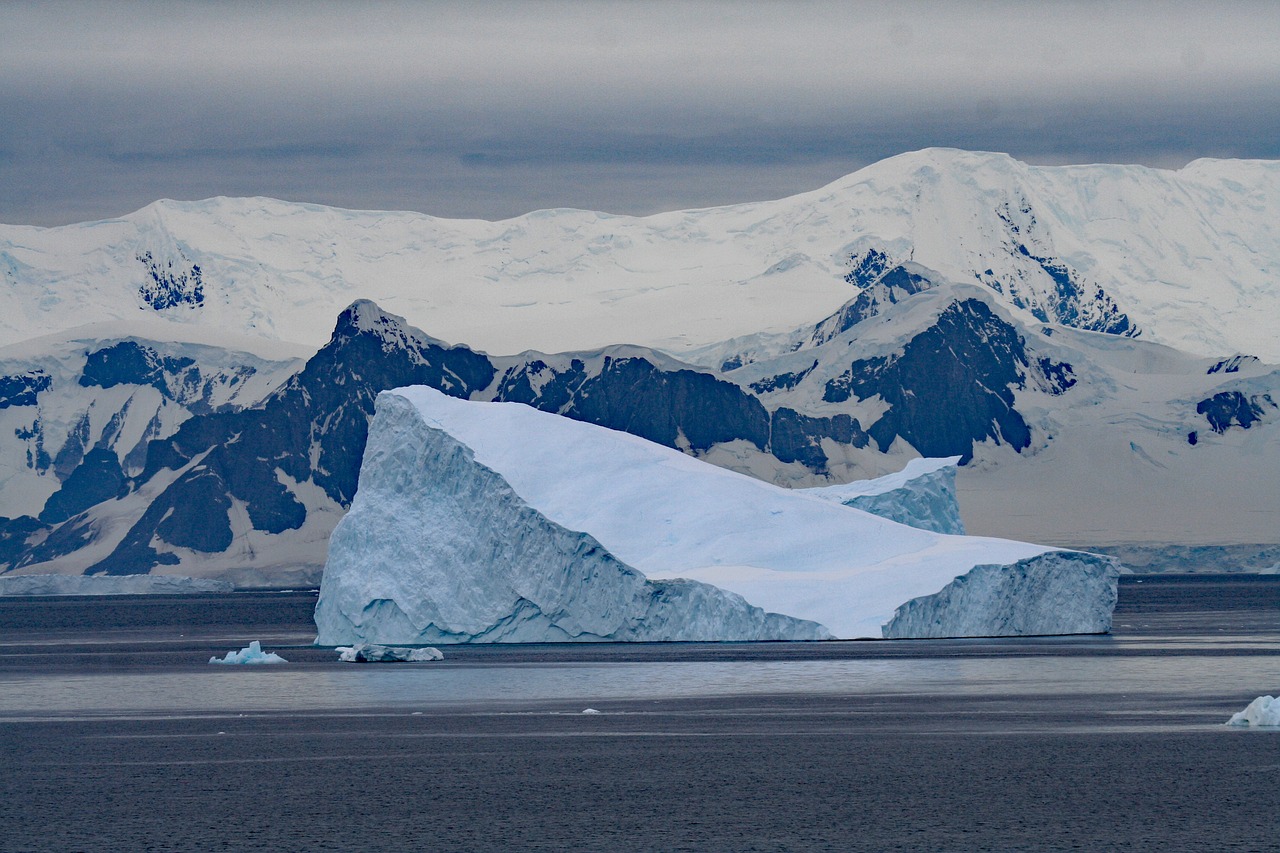
Greenhouse Gas Emissions
are one of the leading culprits behind climate change, and they have a profound impact on our planet's biodiversity. These gases, including carbon dioxide (CO2), methane (CH4), and nitrous oxide (N2O), trap heat in the atmosphere, creating a greenhouse effect that warms the Earth. This warming leads to changes in weather patterns, rising sea levels, and altered habitats, all of which threaten countless species and ecosystems.
The primary sources of greenhouse gas emissions are human activities, particularly the burning of fossil fuels for energy, deforestation, and industrial processes. To put this into perspective, let’s take a look at the major contributors to greenhouse gas emissions globally:
| Source | Percentage of Global Emissions |
|---|---|
| Energy Production | 73% |
| Agriculture | 18% |
| Industry | 9% |
As we can see from the table, energy production is the largest contributor to greenhouse gas emissions, which is alarming considering our reliance on fossil fuels. The burning of coal, oil, and natural gas not only emits CO2 but also releases other harmful pollutants that can degrade air quality and harm human health.
Deforestation plays a significant role in increasing greenhouse gas levels as well. Trees absorb CO2, so when forests are cleared for agriculture or urban development, not only is this natural carbon sink lost, but the carbon stored in the trees is also released back into the atmosphere. This vicious cycle exacerbates climate change and leads to a loss of biodiversity as habitats are destroyed.
The effects of greenhouse gas emissions on biodiversity are profound. As temperatures rise, many species find it increasingly difficult to adapt. Some are forced to migrate to cooler areas, while others face extinction if they cannot find suitable habitats. For example, polar bears are losing their sea ice habitat due to rising temperatures, which directly affects their ability to hunt for food.
In addition to temperature changes, altered precipitation patterns can lead to droughts or flooding, further stressing ecosystems. Coral reefs, which are highly sensitive to temperature changes, are experiencing widespread bleaching due to warmer waters, leading to significant declines in marine biodiversity.
Addressing greenhouse gas emissions is crucial not only for combating climate change but also for preserving the rich tapestry of life on Earth. By transitioning to renewable energy sources, enhancing energy efficiency, and protecting our forests, we can mitigate these emissions and work towards a more sustainable future. The time to act is now, as the health of our planet and its biodiversity hangs in the balance.
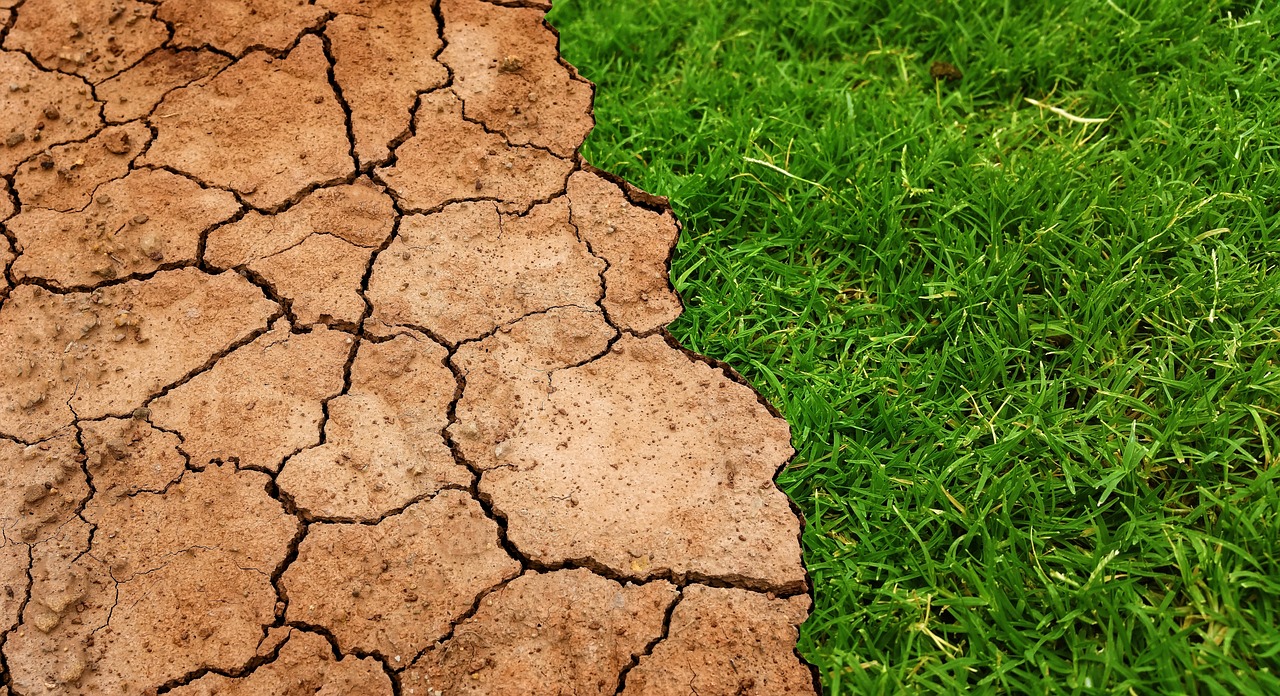
Deforestation and Habitat Loss
Deforestation is a pressing global issue that significantly contributes to climate change and the alarming rate of habitat loss. When we talk about deforestation, we are referring to the large-scale removal of trees from forests, which can lead to the destruction of entire ecosystems. Imagine a vibrant forest filled with diverse flora and fauna; now picture it stripped bare, leaving behind a desolate landscape. This is not just an environmental catastrophe; it's a profound loss of biodiversity. The impact of deforestation extends far beyond the trees themselves—it disrupts the delicate balance of ecosystems that countless species rely on for survival.
One of the most critical consequences of habitat loss due to deforestation is the fragmentation of ecosystems. When forests are cleared, the remaining patches of habitat become isolated, making it difficult for species to migrate, find mates, or access food. This isolation can lead to inbreeding, reduced genetic diversity, and ultimately, extinction. For instance, species such as the Sumatran tiger and the orangutan are facing dire threats as their habitats are destroyed for agriculture and logging. The loss of these iconic species is a stark reminder of the cascading effects of habitat destruction.
Moreover, deforestation contributes to climate change by releasing stored carbon dioxide (CO2) back into the atmosphere. Trees act as carbon sinks, absorbing CO2 during photosynthesis. When they are cut down, not only is this valuable carbon storage lost, but the carbon stored in the trees is also released, exacerbating global warming. According to recent studies, deforestation is responsible for approximately 10% of global greenhouse gas emissions. This statistic underscores the urgency of addressing deforestation as part of our climate change mitigation strategies.
In addition to the ecological implications, deforestation also has severe socio-economic impacts. Many indigenous communities depend on forests for their livelihoods, culture, and identity. The loss of these habitats threatens their way of life, leading to conflicts over land use and resources. As we witness the encroachment of agriculture and urban development into forested areas, it becomes increasingly clear that we must find a balance between human needs and environmental preservation.
To combat deforestation and its associated habitat loss, several strategies can be employed. These include:
- Reforestation: Planting new trees in deforested areas to restore ecosystems.
- Sustainable forestry practices: Implementing methods that allow for timber harvesting while maintaining forest integrity.
- Protected areas: Establishing national parks and reserves to safeguard critical habitats.
- Community engagement: Involving local communities in conservation efforts to ensure sustainable land management.
In conclusion, addressing deforestation and habitat loss is crucial for preserving biodiversity and mitigating climate change. By understanding the intricate relationships within ecosystems and the role of forests, we can take meaningful steps toward a more sustainable future. The fight against deforestation is not just an environmental issue; it is a fight for the survival of countless species and the health of our planet.
Q1: What are the main causes of deforestation?
A1: The primary causes of deforestation include agricultural expansion, logging, infrastructure development, and mining activities.
Q2: How does deforestation affect climate change?
A2: Deforestation releases stored carbon dioxide into the atmosphere, contributing to global warming and altering climate patterns.
Q3: What can individuals do to help combat deforestation?
A3: Individuals can support sustainable products, participate in reforestation efforts, and advocate for policies that protect forests.
Q4: Are there any successful examples of reforestation?
A4: Yes, countries like China and India have implemented successful reforestation programs that have significantly increased forest cover in recent years.
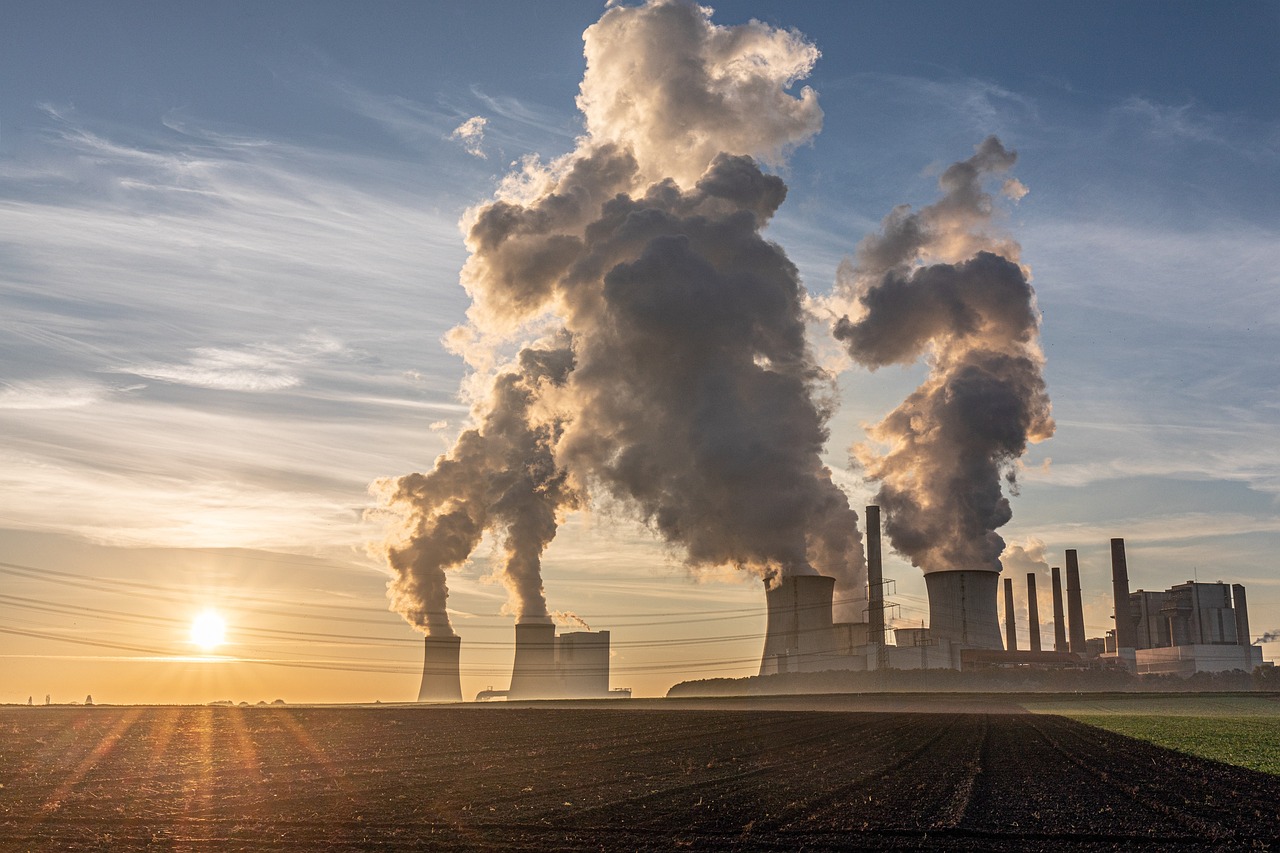
Ocean Acidification
Ocean acidification is one of the most alarming consequences of climate change, and it’s happening right under our noses. As we continue to pump carbon dioxide (CO2) into the atmosphere, about a quarter of that CO2 is absorbed by the oceans. This process leads to a chemical reaction that lowers the pH of seawater, making it more acidic. You might be wondering, why should we care about this? Well, the health of our oceans is crucial not just for marine life but for the entire planet. The ocean is a vital part of the Earth’s ecosystem, supporting a vast array of species and providing essential services to human society.
As the oceans become more acidic, the impact on marine biodiversity is profound. Coral reefs, often referred to as the "rainforests of the sea," are particularly vulnerable. These vibrant ecosystems rely on calcium carbonate to build their structures. However, increased acidity reduces the availability of carbonate ions, which are essential for coral growth. This leads to coral bleaching, a phenomenon where corals lose their color and vitality, ultimately resulting in their death if conditions do not improve. The loss of coral reefs not only affects marine species that depend on them but also threatens the livelihoods of millions of people who rely on fishing and tourism.
Moreover, ocean acidification can disrupt the entire food web. For instance, shellfish like oysters, clams, and some plankton species struggle to form their shells in more acidic waters. This not only jeopardizes their survival but also impacts the species that prey on them, creating a ripple effect throughout the ecosystem. The intricate balance of marine life is at stake, and the consequences could be catastrophic.
To illustrate the severity of ocean acidification, consider the following table that summarizes its effects on various marine species:
| Marine Species | Impact of Ocean Acidification |
|---|---|
| Corals | Reduced calcification rates leading to weaker structures and increased bleaching. |
| Shellfish (e.g., oysters, clams) | Difficulties in shell formation, leading to population declines. |
| Plankton | Altered growth rates affecting the entire marine food chain. |
| Fish species (e.g., clownfish) | Changes in behavior and survival rates due to altered sensory environments. |
In summary, ocean acidification is a silent but deadly threat to marine biodiversity. It's a reminder that the actions we take on land have far-reaching consequences for the health of our oceans. As stewards of the planet, we must recognize the interconnectedness of our ecosystems and take urgent action to reduce our carbon footprint. By doing so, we can help protect the delicate balance of marine life and ensure that future generations can enjoy the wonders of our oceans.
- What causes ocean acidification? Ocean acidification is primarily caused by the absorption of carbon dioxide from the atmosphere into the ocean, resulting in increased acidity.
- How does ocean acidification affect marine life? It negatively impacts species that rely on calcium carbonate for their shells and skeletons, disrupts food webs, and threatens coral reefs.
- Can ocean acidification be reversed? While some measures can mitigate its effects, reversing ocean acidification requires significant reductions in global CO2 emissions.
- What can individuals do to help? Individuals can reduce their carbon footprint by using less energy, supporting renewable energy initiatives, and advocating for policies that protect the environment.
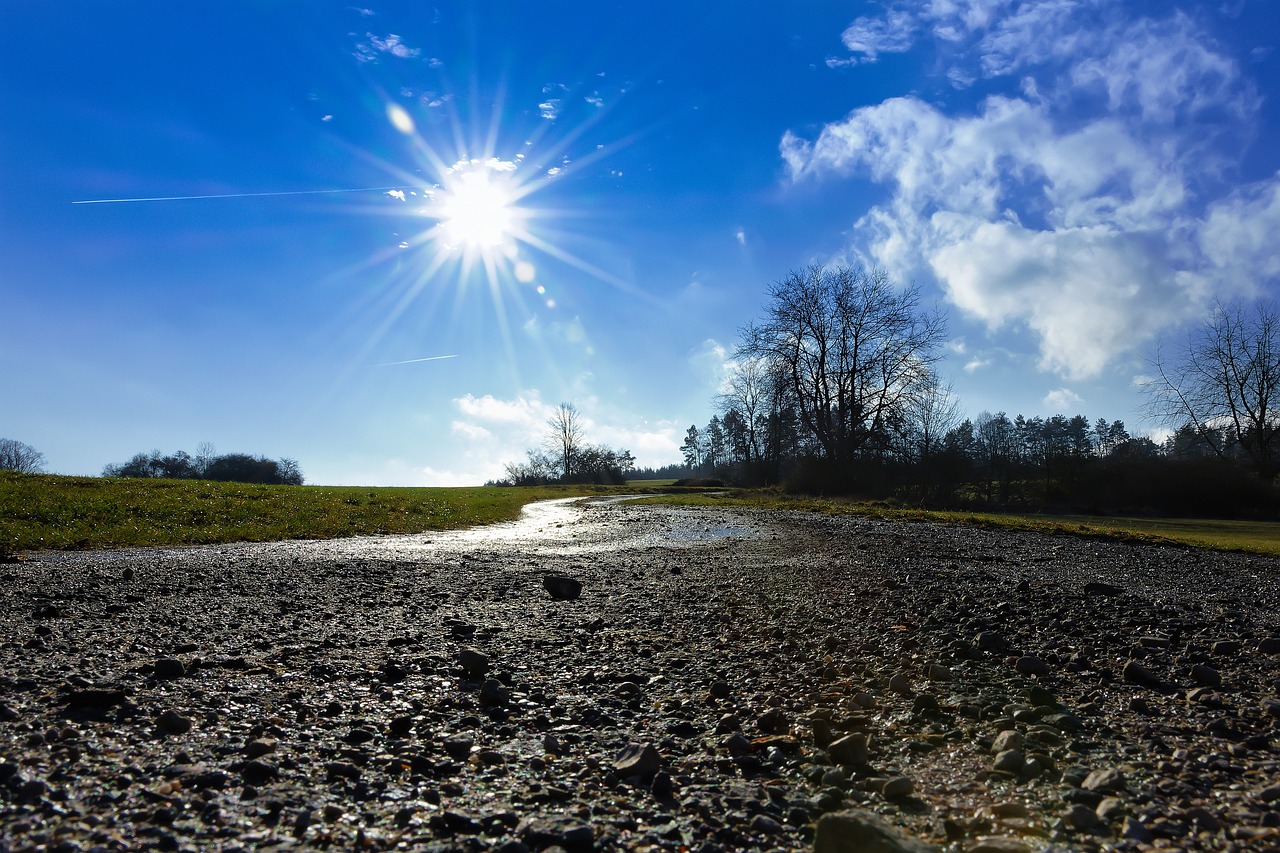
Effects on Species
Climate change is not just a distant threat; it's a reality that is reshaping the very fabric of life on Earth. As temperatures rise and weather patterns become increasingly erratic, the survival of countless species hangs in the balance. Imagine a delicate dance where each step is crucial; when the rhythm is disrupted, the entire performance falters. This is precisely what is happening to many species as they struggle to adapt to rapidly changing environments.
One of the most significant impacts of climate change is the alteration of habitats. Species that have thrived in specific climates for millennia are finding themselves in unfamiliar territories. For instance, animals like the polar bear are losing their sea ice habitats due to melting glaciers, forcing them to travel further for food. Similarly, birds that migrate based on seasonal cues are experiencing mismatches in their breeding and food availability, leading to decreased survival rates.
Moreover, the effects of climate change are not uniform across the globe. Some species may find refuge in cooler areas, while others may face extinction. The IUCN Red List provides a stark reminder of this reality, categorizing thousands of species as threatened or endangered due to climate-related factors. Below is a brief overview of how various species are affected:
| Species | Impact of Climate Change | Conservation Status |
|---|---|---|
| Polar Bear | Loss of sea ice habitat | Vulnerable |
| Coral Species | Coral bleaching due to rising temperatures | Endangered |
| Golden Toad | Extinction due to habitat loss and climate change | Extinct |
In addition to habitat loss, rising temperatures can also lead to shifts in species behavior. For example, many reptiles, which rely on external temperatures to regulate their body heat, are experiencing altered reproductive cycles. This can lead to a mismatch between the timing of mating and the availability of food resources, further jeopardizing their populations. Furthermore, changes in temperature and precipitation patterns can lead to increased competition among species, as some may thrive while others decline.
As we consider the future of our planet, it's crucial to recognize the interconnectedness of all species. The loss of even a single species can have a cascading effect on entire ecosystems. This is akin to removing a single piece from a complex puzzle; the image becomes distorted, and the integrity of the whole is compromised. Therefore, understanding the effects of climate change on species is not just about protecting individual animals; it’s about preserving the delicate balance of life itself.
In conclusion, the effects of climate change on species are profound and multifaceted. From habitat loss to altered behaviors, the challenges are daunting. However, by raising awareness and taking action, we can work towards mitigating these impacts and ensuring a future where biodiversity thrives amidst the changing climate.
- What is biodiversity? Biodiversity refers to the variety of life on Earth, including the diversity of species, ecosystems, and genetic variations.
- How does climate change affect biodiversity? Climate change leads to habitat loss, altered behaviors, and increased extinction rates, thereby threatening biodiversity.
- What can be done to protect endangered species? Conservation efforts, habitat restoration, and sustainable practices are essential to protect endangered species from the impacts of climate change.

Threatened Ecosystems
As we navigate the complexities of our planet's changing climate, it's crucial to shine a spotlight on the ecosystems that are bearing the brunt of these shifts. Ecosystems such as forests, wetlands, and coral reefs are not just beautiful landscapes; they are vital to the health of our planet and the survival of countless species, including humans. Each of these ecosystems plays a unique role in maintaining biodiversity, and their degradation can lead to a ripple effect that disrupts the delicate balance of life on Earth.
Take coral reefs, for instance. Often referred to as the "rainforests of the sea," these vibrant underwater ecosystems are home to a staggering variety of marine life. However, they are facing unprecedented challenges due to climate change. Rising sea temperatures lead to coral bleaching, a phenomenon that occurs when corals expel the algae living in their tissues, resulting in loss of color and vital nutrients. This not only threatens the coral itself but also the myriad of species that depend on these reefs for shelter and food. The loss of coral reefs could mean the extinction of many marine species and the collapse of local fishing economies.
Similarly, tropical rainforests, often dubbed the "lungs of the Earth," are experiencing alarming rates of deforestation and climate-induced changes. These forests are crucial for carbon storage and oxygen production, but as temperatures rise and rainfall patterns shift, the survival of many plant and animal species becomes increasingly precarious. The intricate web of life that thrives in these forests is at risk, with species facing habitat loss and fragmentation. The implications extend beyond biodiversity; indigenous communities that rely on these forests for their livelihoods are also threatened.
Wetlands, often overlooked, are another ecosystem in peril. They act as natural sponges, absorbing excess rainfall and filtering pollutants. However, rising sea levels and changing precipitation patterns are putting immense pressure on these vital areas. The loss of wetlands not only diminishes biodiversity but also exacerbates flooding and water quality issues, impacting both wildlife and human populations.
To illustrate the severity of the situation, consider the following table that outlines the key threats faced by these ecosystems:
| Ecosystem | Key Threats | Consequences |
|---|---|---|
| Coral Reefs | Coral bleaching, ocean acidification | Loss of marine biodiversity, economic impact on fishing |
| Tropical Rainforests | Deforestation, climate change | Species extinction, loss of indigenous livelihoods |
| Wetlands | Rising sea levels, pollution | Increased flooding, reduced water quality |
As we can see, the threats to these ecosystems are interlinked with broader climate change issues. It's not merely about saving a few species; it's about preserving the intricate connections that sustain life on our planet. The degradation of one ecosystem can lead to the collapse of others, creating a domino effect that could have dire consequences for all living beings.
In light of these challenges, it becomes imperative for us to take action. Conservation efforts must be ramped up to protect these ecosystems. Strategies such as establishing marine protected areas, reforestation initiatives, and wetland restoration projects can help mitigate the impacts of climate change and promote resilience in these vulnerable habitats. By prioritizing the health of these ecosystems, we not only safeguard our planet's biodiversity but also ensure a sustainable future for generations to come.
- What are the main threats to biodiversity? The main threats include habitat destruction, climate change, pollution, and overexploitation of resources.
- How does climate change affect coral reefs? Climate change leads to rising sea temperatures and ocean acidification, which can cause coral bleaching and loss of marine life.
- Why are tropical rainforests important? Tropical rainforests are essential for carbon storage, oxygen production, and support a vast diversity of species.
- What can individuals do to help protect ecosystems? Individuals can help by reducing their carbon footprint, supporting conservation organizations, and advocating for sustainable practices.

Coral Reefs
Coral reefs are often referred to as the rainforests of the sea, and for good reason! These vibrant ecosystems are teeming with life and play a crucial role in maintaining the health of our oceans. However, they are also among the most affected ecosystems due to the relentless impacts of climate change. Rising sea temperatures, ocean acidification, and pollution are just a few of the threats that are pushing these delicate structures to the brink of collapse. Imagine a world without coral reefs—it's a scary thought, isn't it?
Coral reefs provide a myriad of benefits not only to marine life but also to humans. They serve as critical habitats for countless species, support local fisheries, and protect coastlines from erosion. In fact, it’s estimated that over 500 million people worldwide rely on coral reefs for their livelihoods. The loss of these ecosystems would not only mean the extinction of numerous marine species but also the loss of food sources and economic stability for coastal communities.
One of the most alarming phenomena affecting coral reefs is coral bleaching. This occurs when corals become stressed due to elevated water temperatures, causing them to expel the algae (zooxanthellae) that live in their tissues. These algae provide corals with their vibrant colors and, more importantly, are a primary source of energy for them. Without these algae, corals turn white and become more susceptible to disease, starvation, and death. The frequency of bleaching events has increased dramatically over the past few decades, raising concerns about the future of these ecosystems.
Additionally, ocean acidification, a direct result of increased levels of carbon dioxide in the atmosphere, is making it harder for corals to build their calcium carbonate skeletons. This process not only weakens the physical structure of the reefs but also affects the entire marine ecosystem that relies on them. The implications are dire: as coral reefs decline, so too does the biodiversity that depends on them.
To illustrate the severity of the situation, consider the following table that highlights the key threats to coral reefs:
| Threat | Impact on Coral Reefs |
|---|---|
| Rising Sea Temperatures | Causes coral bleaching and increased mortality rates. |
| Ocean Acidification | Weakens coral structures, making them more susceptible to damage. |
| Pollution | Degrades water quality, leading to harmful algal blooms and disease. |
| Overfishing | Disrupts the balance of marine ecosystems, affecting coral health. |
| Coastal Development | Destroys habitats and increases sedimentation, smothering corals. |
In light of these challenges, it's crucial that we take action to protect coral reefs. Conservation efforts such as establishing marine protected areas, promoting sustainable fishing practices, and reducing carbon emissions are vital to ensuring the survival of these ecosystems. By working together, we can help preserve the beauty and biodiversity of coral reefs for generations to come. After all, if we don’t act now, we risk losing one of the most magnificent treasures of our planet.
- What are coral reefs? Coral reefs are underwater structures made from calcium carbonate secreted by corals, providing habitat and shelter for various marine species.
- Why are coral reefs important? They support marine biodiversity, protect coastlines, and provide resources and livelihoods for millions of people.
- What causes coral bleaching? Coral bleaching occurs when corals expel the algae living in their tissues due to stress from rising water temperatures.
- How can we help protect coral reefs? Supporting sustainable practices, reducing carbon footprints, and engaging in local conservation efforts can make a significant difference.
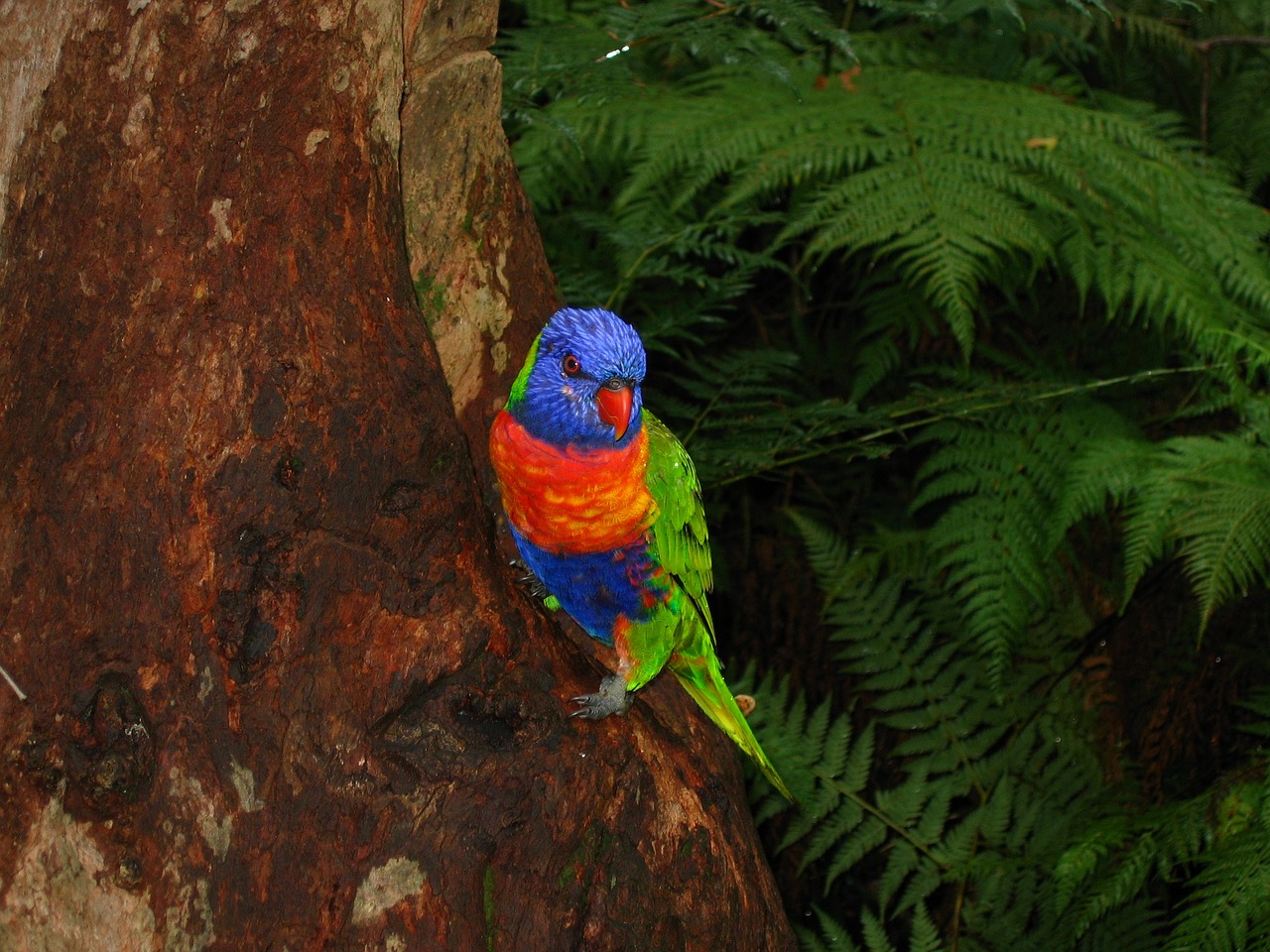
Tropical Rainforests
Tropical rainforests are often referred to as the "lungs of the Earth," and for good reason. They are incredibly rich ecosystems that play a crucial role in sustaining global biodiversity. Covering only about 6% of the Earth's surface, these lush forests are home to more than half of the world's plant and animal species. Imagine walking through a tropical rainforest; the air is thick with humidity, the sounds of exotic birds fill your ears, and vibrant colors from flowers and creatures surround you. However, this natural wonder is under severe threat from climate change.
The impacts of climate change on tropical rainforests are multifaceted and alarming. Rising temperatures can lead to altered rainfall patterns, which in turn can disrupt the delicate balance of these ecosystems. For instance, some areas may experience prolonged droughts, while others could face intense flooding. Both scenarios are detrimental to the flora and fauna that have adapted over millennia to specific climatic conditions. As the climate continues to shift, species that rely on these forests for survival are increasingly at risk.
One of the most significant threats to tropical rainforests is deforestation, primarily driven by agricultural expansion, logging, and infrastructure development. The loss of trees not only contributes to carbon emissions but also destroys the habitats of countless species. For example, when forests are cleared for palm oil plantations, the unique biodiversity that thrives in these areas is lost forever. In fact, it is estimated that we lose approximately 137 plant, animal, and insect species every day due to rainforest deforestation.
Moreover, the interconnectedness of tropical rainforests with global weather patterns cannot be overstated. These forests help regulate the Earth's climate by absorbing carbon dioxide and releasing oxygen. When they are destroyed, not only do we lose this vital function, but we also exacerbate climate change by releasing stored carbon back into the atmosphere. It's a vicious cycle that threatens not only the rainforests themselves but also the entire planet.
To combat these challenges, conservation efforts are more crucial than ever. Strategies such as sustainable forestry, reforestation, and the establishment of protected areas are being implemented worldwide. These measures aim to preserve the remaining rainforest habitats and restore those that have been damaged. For instance, initiatives that promote agroforestry allow for the cultivation of crops alongside trees, creating a more sustainable model that benefits both the environment and local communities.
In conclusion, the survival of tropical rainforests is essential not just for the myriad of species that inhabit them but also for the health of our planet as a whole. As we face the pressing challenges posed by climate change, it is imperative that we take action to protect these vital ecosystems. The future of biodiversity, climate stability, and even human well-being hinges on our ability to safeguard tropical rainforests.
- What are tropical rainforests?
Tropical rainforests are dense forests located near the equator, characterized by high rainfall and rich biodiversity.
- Why are tropical rainforests important?
They play a critical role in regulating the Earth's climate, absorbing carbon dioxide, and providing habitat for countless species.
- What are the main threats to tropical rainforests?
The primary threats include deforestation, climate change, and habitat destruction due to agriculture and urbanization.
- How can we help protect tropical rainforests?
Support sustainable products, participate in reforestation projects, and advocate for policies that protect these vital ecosystems.
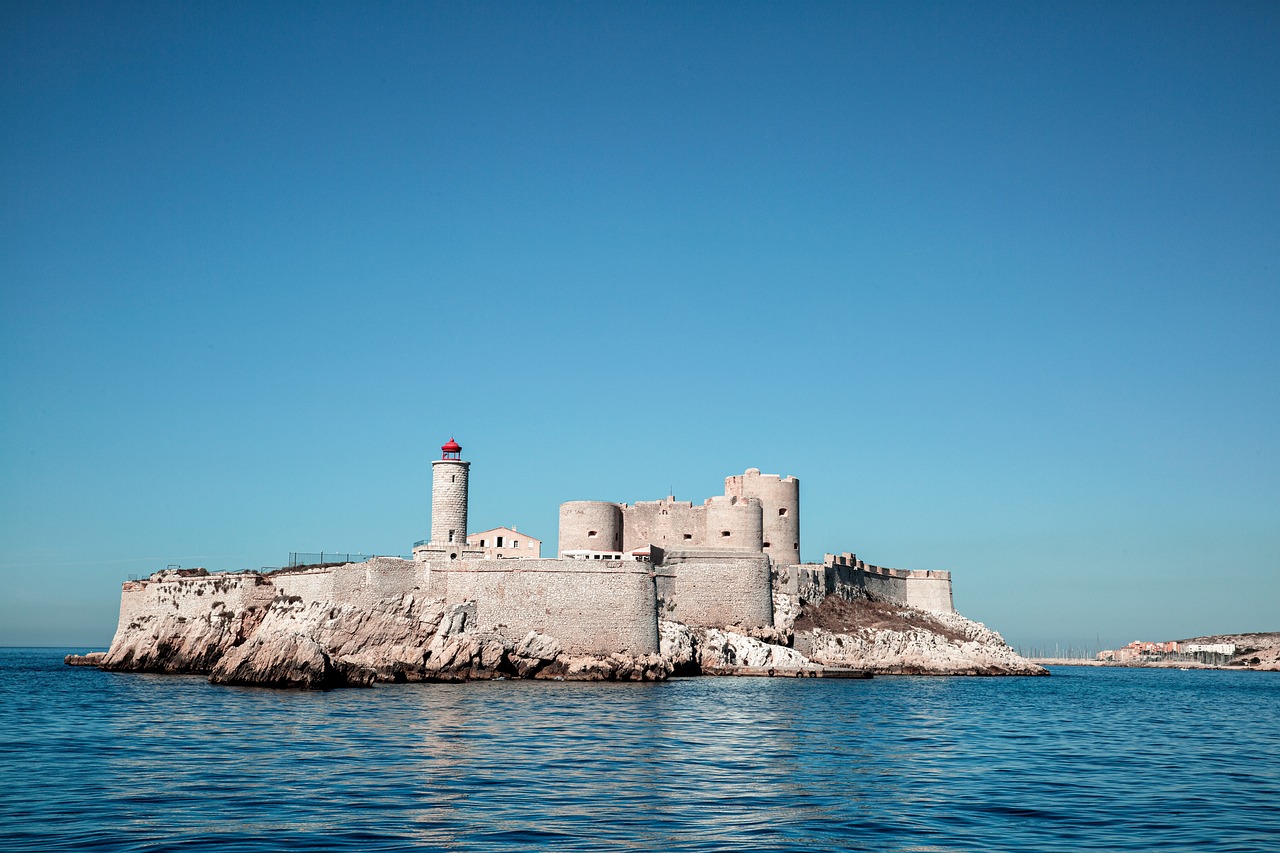
Conservation Strategies
As the impacts of climate change on biodiversity become increasingly evident, the need for effective has never been more urgent. These strategies aim to mitigate the adverse effects of climate change while promoting the resilience of ecosystems and the species that inhabit them. One of the most effective approaches is the establishment of protected areas, such as national parks and wildlife reserves. These zones serve as sanctuaries for endangered species and help maintain ecological balance by providing critical habitats free from human interference.
Another vital strategy is the restoration of degraded habitats. This involves activities such as reforestation, wetland restoration, and the rehabilitation of coral reefs. By restoring these ecosystems, we can enhance their ability to sequester carbon and support diverse biological communities. For example, planting native trees in deforested areas not only helps to restore wildlife habitats but also improves local air quality and contributes to the fight against climate change.
Moreover, community engagement plays a crucial role in conservation efforts. Local communities often have invaluable knowledge about their ecosystems and can be powerful allies in conservation initiatives. By involving them in decision-making processes and providing them with the necessary resources and training, we can foster sustainable practices that benefit both the environment and local livelihoods. For instance, when communities are empowered to manage their natural resources sustainably, it leads to better outcomes for biodiversity as well as economic stability.
Another promising strategy is the implementation of sustainable agricultural practices. Agriculture is a significant driver of habitat loss and biodiversity decline, but by adopting methods such as agroforestry, organic farming, and crop rotation, we can reduce its impact on ecosystems. These practices not only enhance soil health and increase crop resilience to climate change but also support a greater diversity of species. For example, intercropping can create habitats for beneficial insects, thereby promoting biodiversity.
Additionally, addressing the issue of invasive species is crucial for protecting native biodiversity. Invasive species can outcompete native flora and fauna, leading to declines in local populations. Implementing control measures and restoring native species can help to rebalance ecosystems and preserve biodiversity. Educational campaigns can also raise awareness about the threats posed by invasive species, encouraging communities to take action.
Lastly, international cooperation is essential in tackling climate change and its effects on biodiversity. Many species migrate across borders, and their conservation often requires collaborative efforts between nations. Initiatives such as the Convention on Biological Diversity (CBD) aim to unite countries in their commitment to preserving the planet's biodiversity. By sharing resources, knowledge, and best practices, we can enhance our collective ability to combat the challenges posed by climate change.
In summary, the fight against climate change and its impact on global biodiversity requires a multifaceted approach. From establishing protected areas and restoring habitats to engaging communities and promoting sustainable practices, every effort counts. As we forge ahead, it is vital to remember that the health of our planet is interconnected with our own well-being, making conservation not just an environmental issue, but a human one as well.
- What are conservation strategies? Conservation strategies are methods and practices designed to protect and preserve biodiversity and ecosystems, particularly in the face of climate change.
- Why is community engagement important in conservation? Community engagement ensures that local knowledge is utilized, promotes sustainable practices, and fosters a sense of ownership over natural resources.
- How can sustainable agriculture help biodiversity? Sustainable agriculture reduces habitat loss, promotes soil health, and supports diverse species by using practices that are less harmful to the environment.
- What role do protected areas play in conservation? Protected areas serve as safe havens for endangered species and help maintain ecological balance by limiting human impact on critical habitats.
- How can international cooperation aid in biodiversity conservation? International cooperation allows countries to share resources, knowledge, and best practices, enhancing the effectiveness of conservation efforts across borders.
Frequently Asked Questions
- What is biodiversity and why is it important?
Biodiversity refers to the variety of life on Earth, including different species, ecosystems, and genetic variations. It's crucial because it helps maintain ecological balance, supports food security, and contributes to human health and well-being. Think of it like a complex web; if one strand is pulled, the entire structure can become unstable.
- How does climate change affect biodiversity?
Climate change leads to alterations in habitats and ecosystems, which can jeopardize the survival of many species. Rising temperatures, changing precipitation patterns, and extreme weather events can disrupt breeding cycles, migration patterns, and food availability. It's like trying to dance to a song that keeps changing tempo—you just can't keep up!
- What are the main causes of climate change?
The primary drivers of climate change include greenhouse gas emissions from burning fossil fuels, deforestation, and industrial processes. These activities increase the concentration of greenhouse gases in the atmosphere, trapping heat and leading to global warming. Imagine a blanket that keeps getting thicker—you just get hotter and hotter!
- What is ocean acidification, and why is it a concern?
Ocean acidification occurs when excess CO2 is absorbed by the oceans, lowering the pH levels and making the water more acidic. This process threatens marine life, especially organisms like coral and shellfish that rely on calcium carbonate to build their shells and skeletons. It's akin to trying to build a sandcastle with wet sand—it's just not going to hold up!
- What ecosystems are most threatened by climate change?
Ecosystems such as coral reefs, tropical rainforests, and wetlands are particularly vulnerable to climate change. These areas face challenges like habitat loss, increased temperatures, and changing weather patterns, all of which can lead to a decline in biodiversity. Think of these ecosystems as the lungs of our planet; if they struggle, we all struggle.
- What can be done to protect biodiversity in the face of climate change?
Conservation strategies like habitat restoration, sustainable land management, and the establishment of protected areas can help safeguard biodiversity. Additionally, promoting awareness and education about the importance of biodiversity can empower communities to take action. It’s like planting seeds; with care and attention, they can grow into something beautiful!



















